SUMMARY
This is AI generated summarization, which may have errors. For context, always refer to the full article.
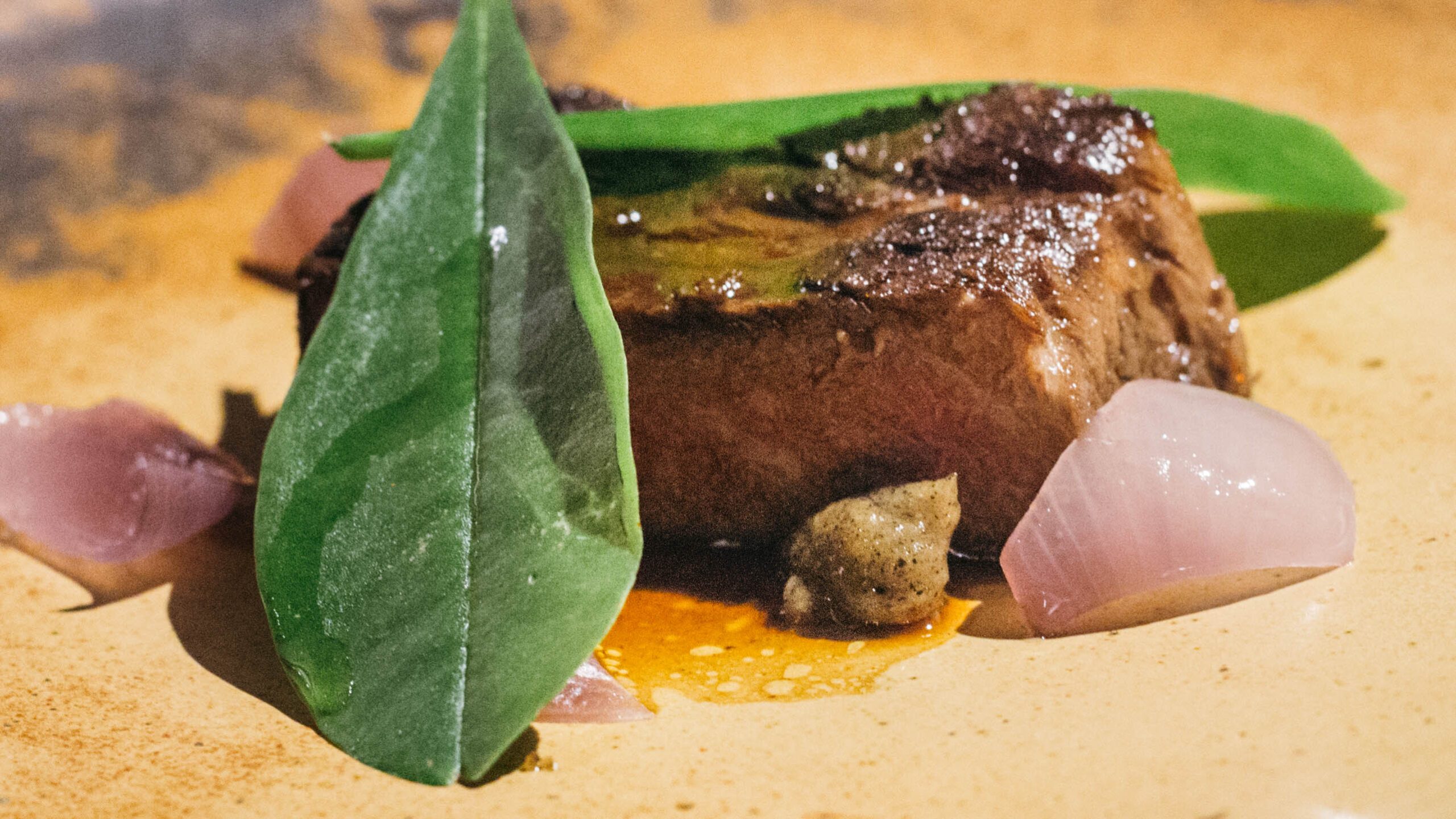
MANILA, Philippines – Gallery Vask was just awarded as the 39th in Asia’s 50 Best Restaurants and the Best in the Philippines last February 29. Indeed, there are exciting times ahead for this restaurant after taking home these prestigious honors.
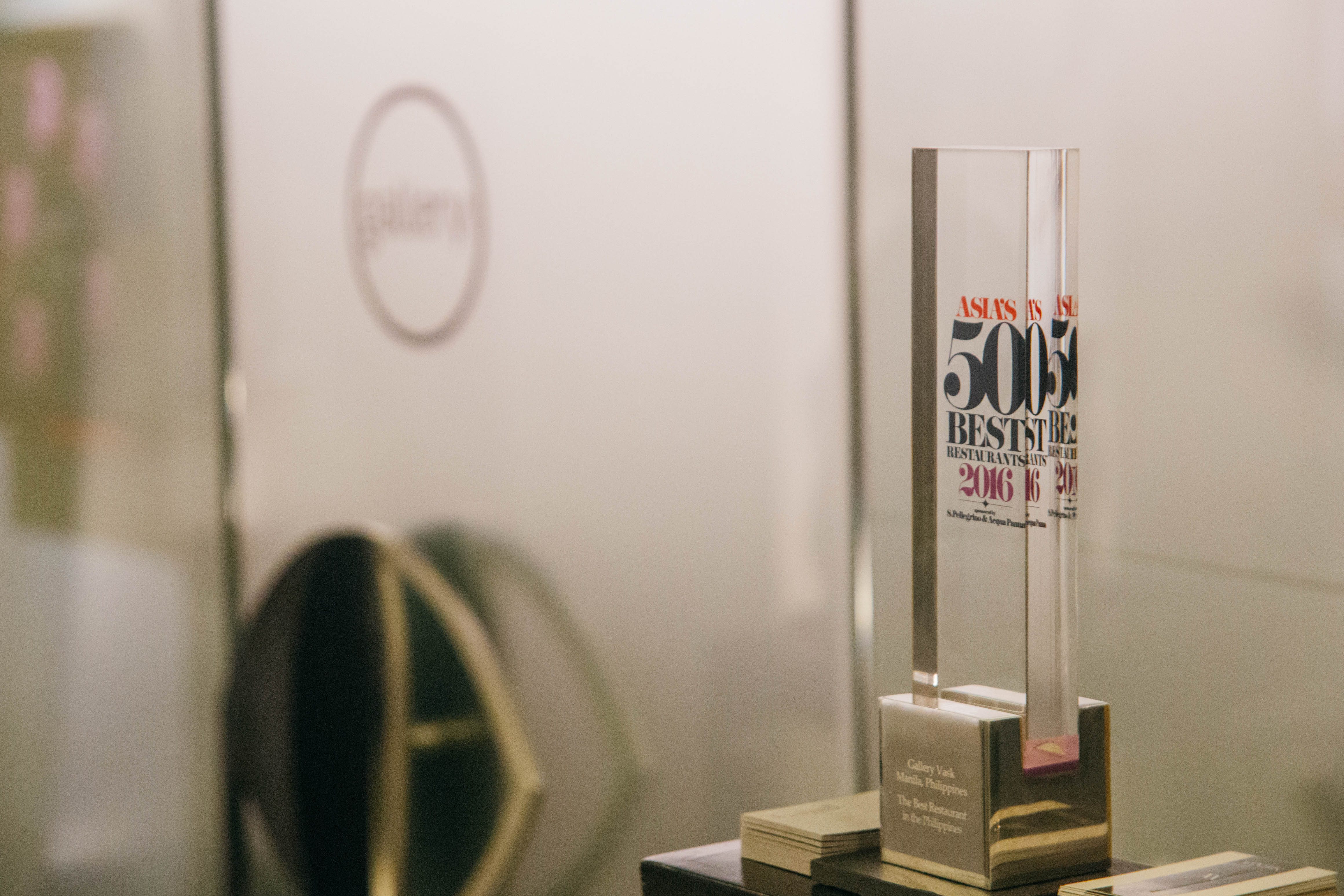
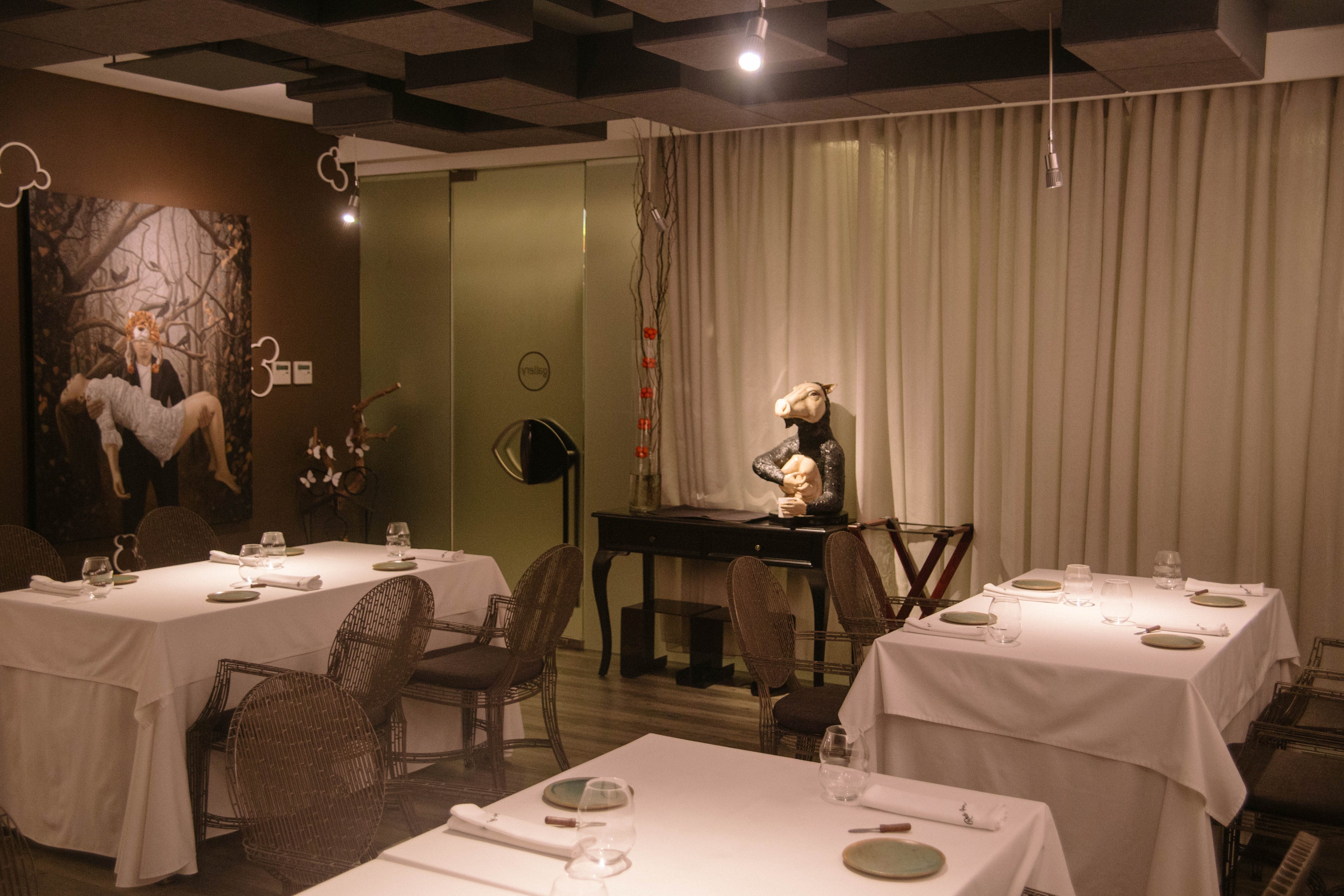
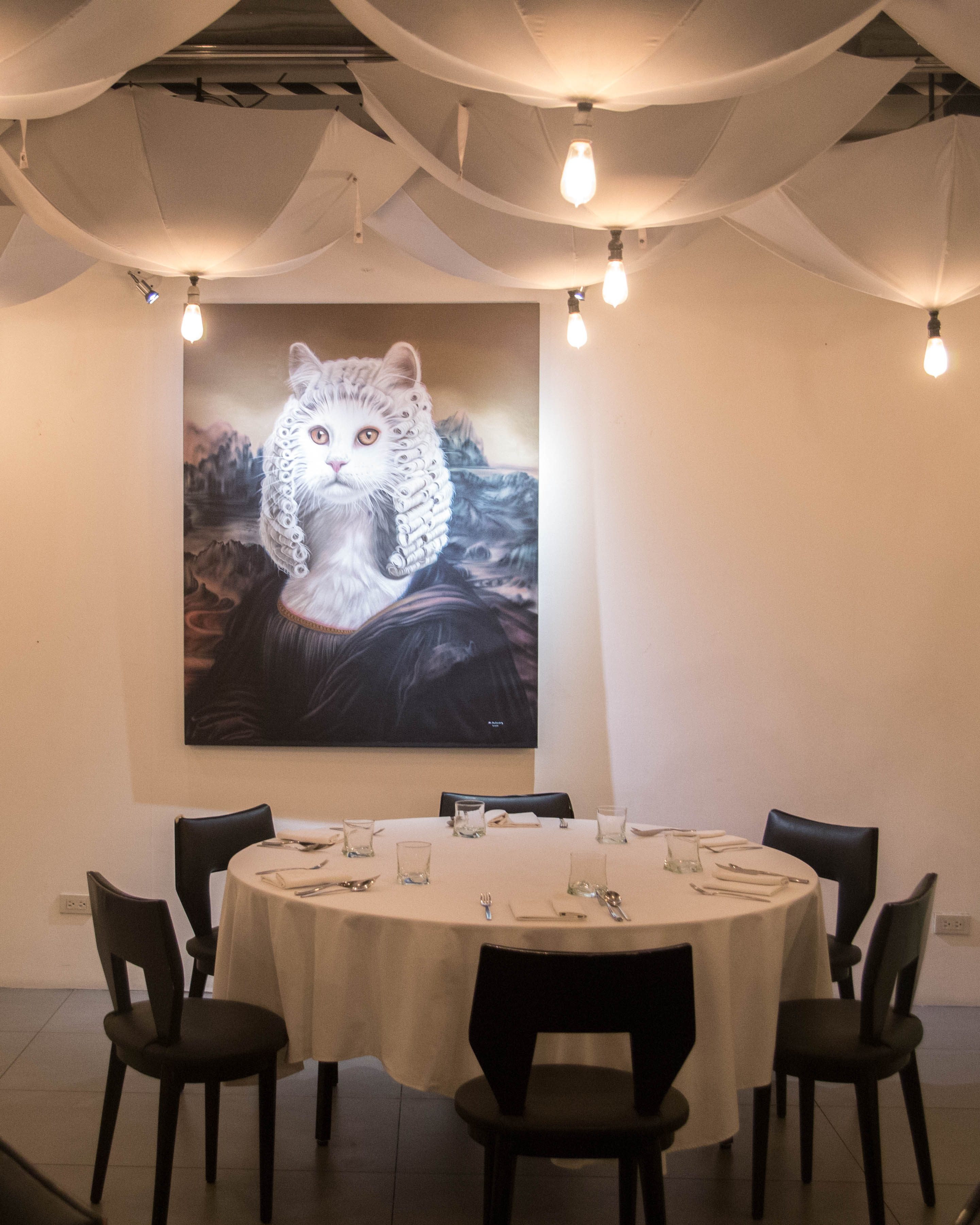
Prepare for a mind-altering adventure with a medley of Filipino-inspired dishes care of Chef Chele Gonzales and his team. You may discover that here, things go deeper than flavorsome and beautifully plated courses.
At Gallery Vask, our meal felt like a journey across the Philippines. We were enchanted by tasting flavors and ingredients that could be found in our very own islands, but were not aware of at first.
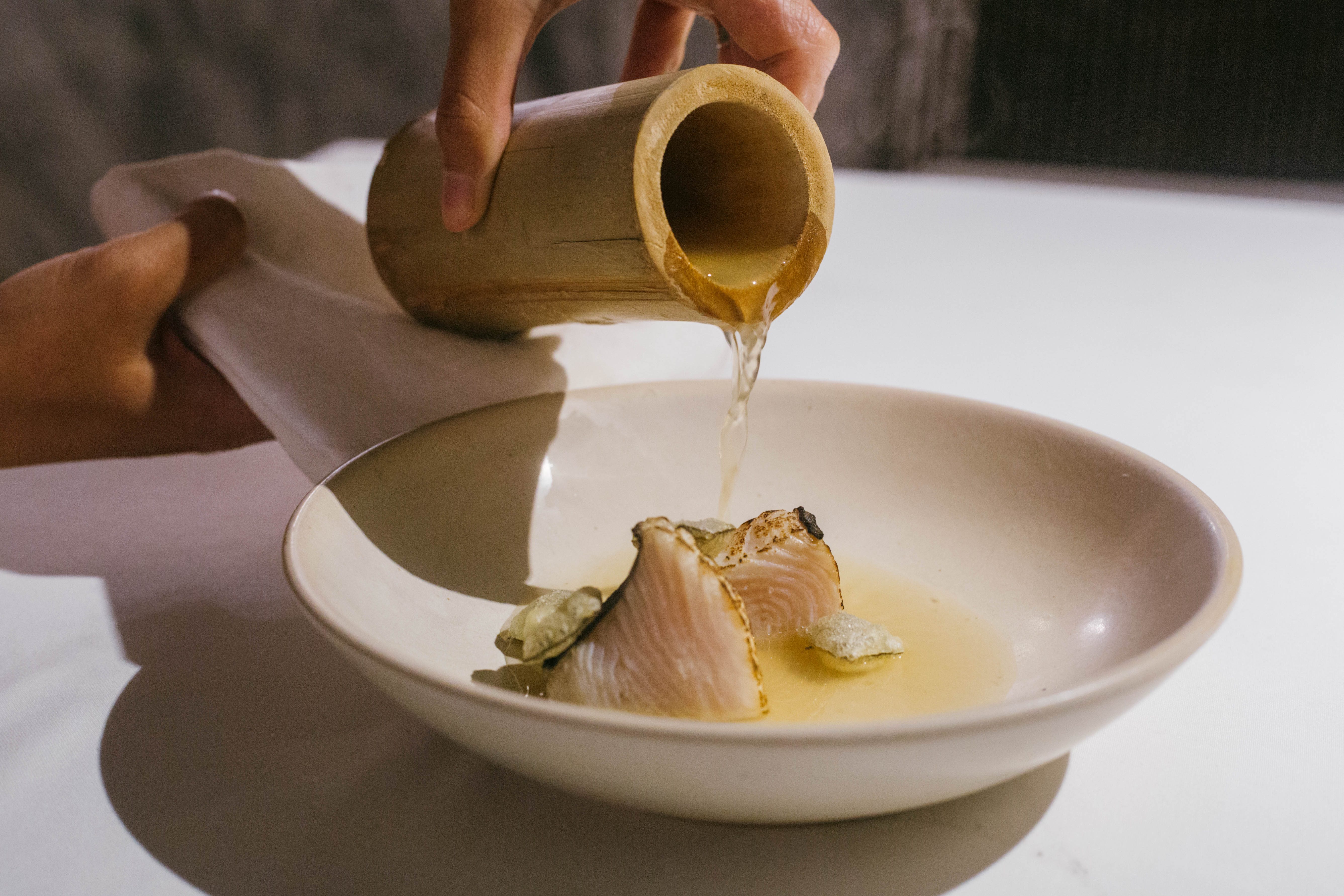
The dishes here can certainly open up new perspectives about Filipino food, and its degustation menus also embrace a Filipino identity, as evidenced by their names, Tanaw (“View,” 5 courses, excluding amuse-bouches and petit fours P2,500), Lakbay (“Journey,” 9 courses, P3,500 + wine pairing, 2,200), and Alamat (“Legend,” 14 courses, P4,900 + wine pairing, P2,500).
Vask also offers a more casual dining setting at Vask Tapas Room, which can be found right beside Gallery Vask. Have a look at the 30 new dishes they launched on June 22 below.
With a combination of dishes from the Lakbay and Alamat menus, let’s take a glimpse into the Gallery Vask experience:
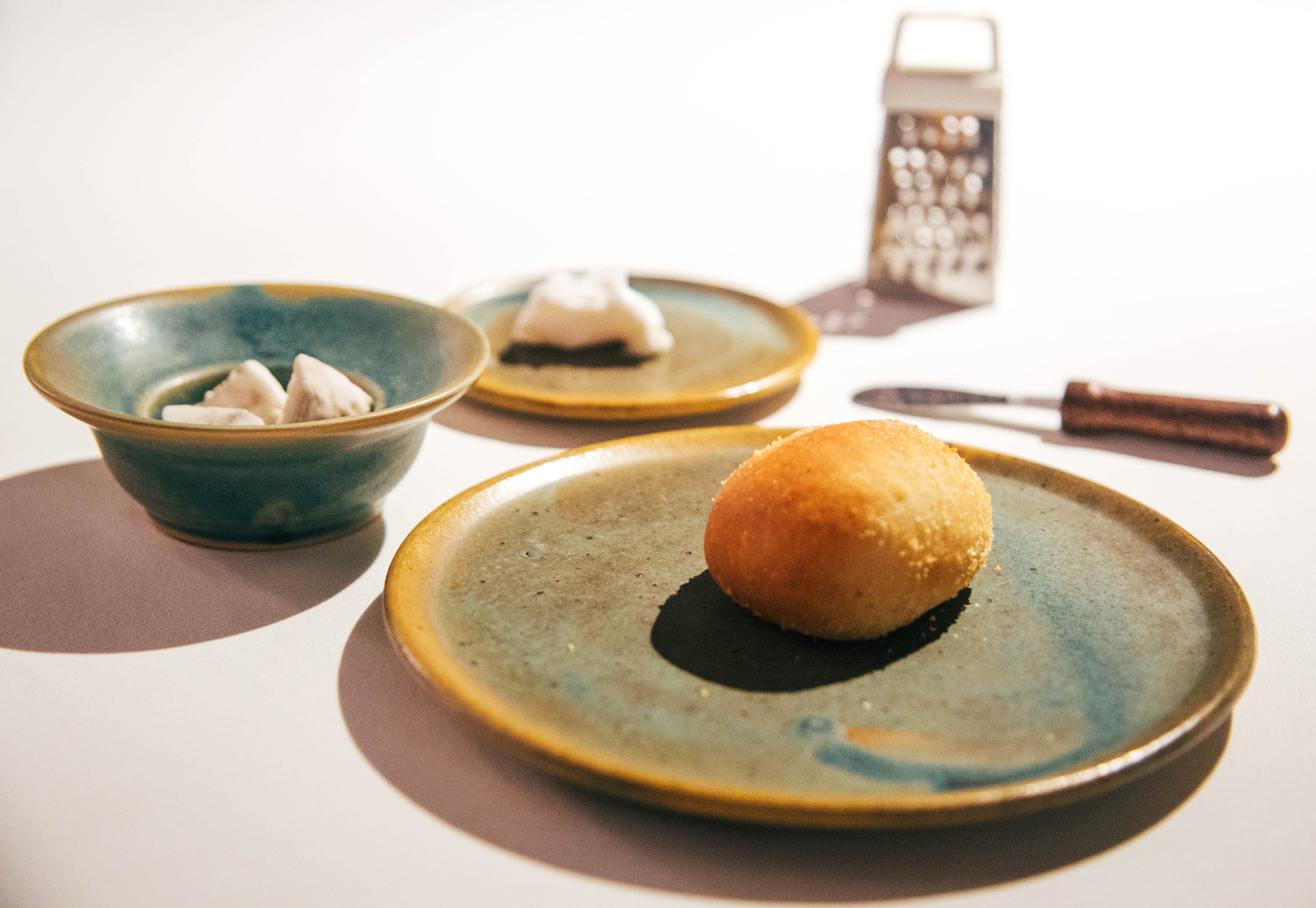
Binondo
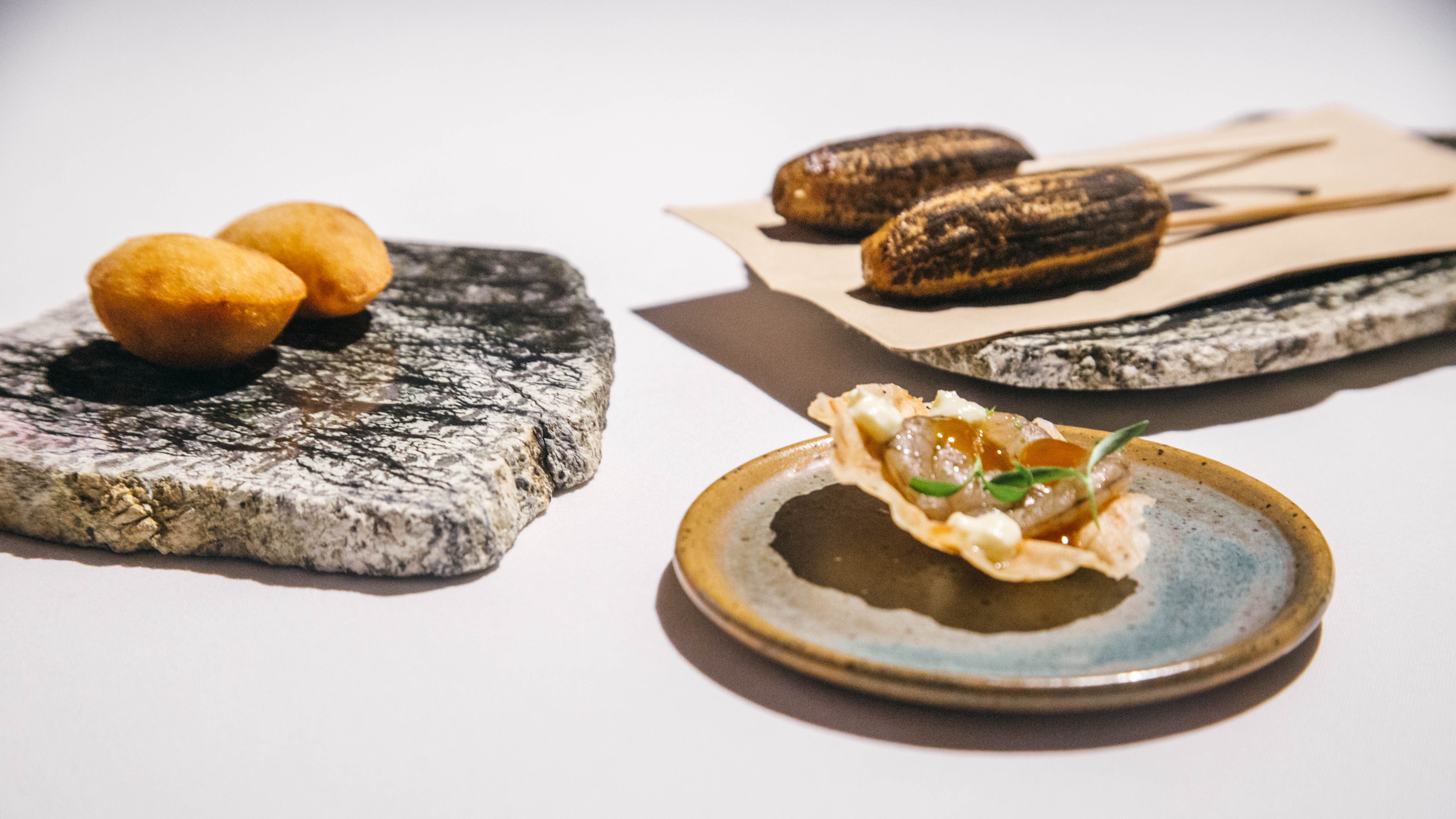
As with any degustation, it starts with amuse-bouches. This set is inspired by Binondo, the Manila district famous for its street food and hole-in-the-wall restaurants.
We were first served a small okoy-inspired plate, with fermented shrimp cracker topped with tamarind wood-smoked shrimps, ginger crème fraiche and soy gel.
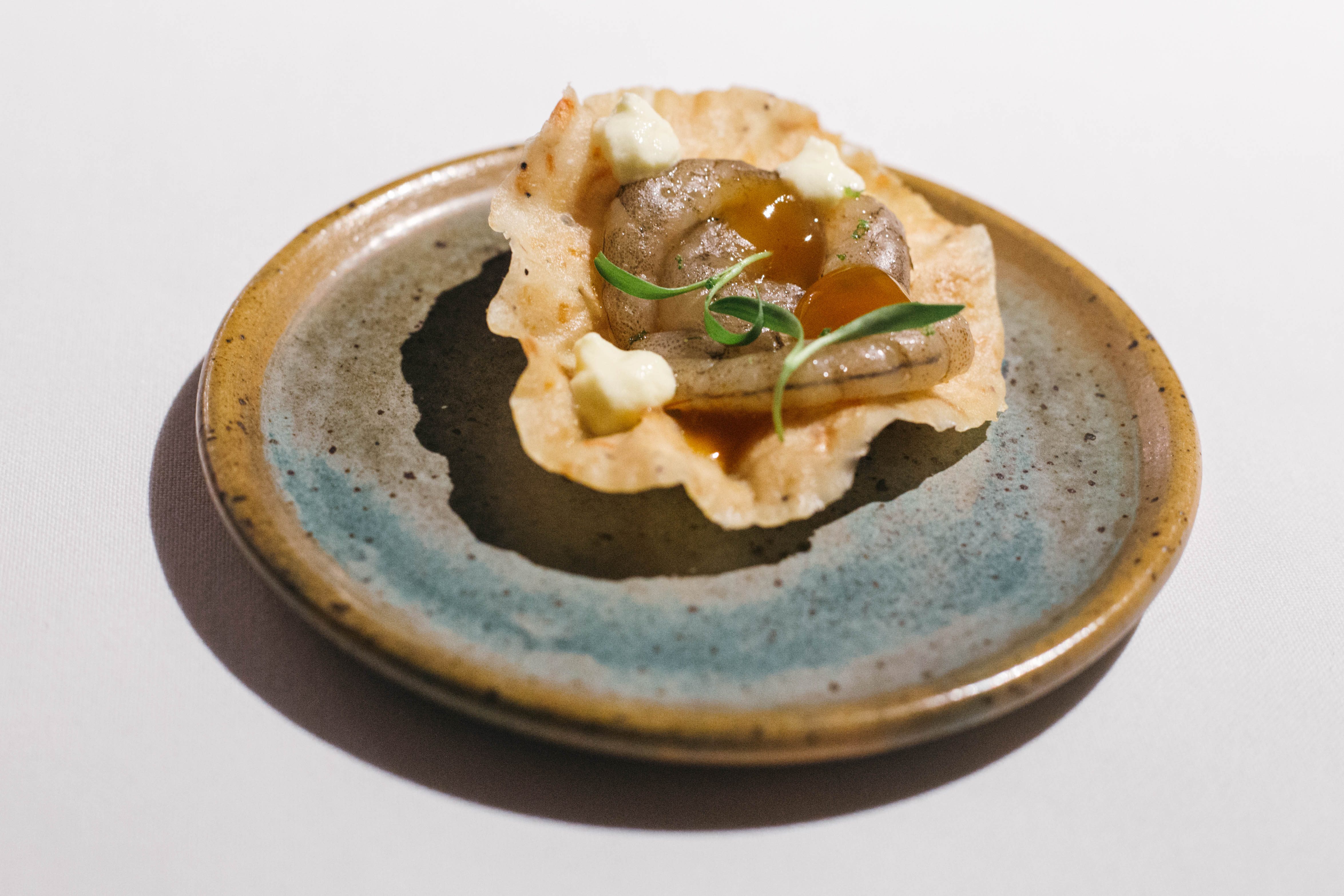
There are also empanadas stuffed with pork longganisa, which was seasoned with onions, paprika, salted egg, and vinegar for that sour and spicy kick.
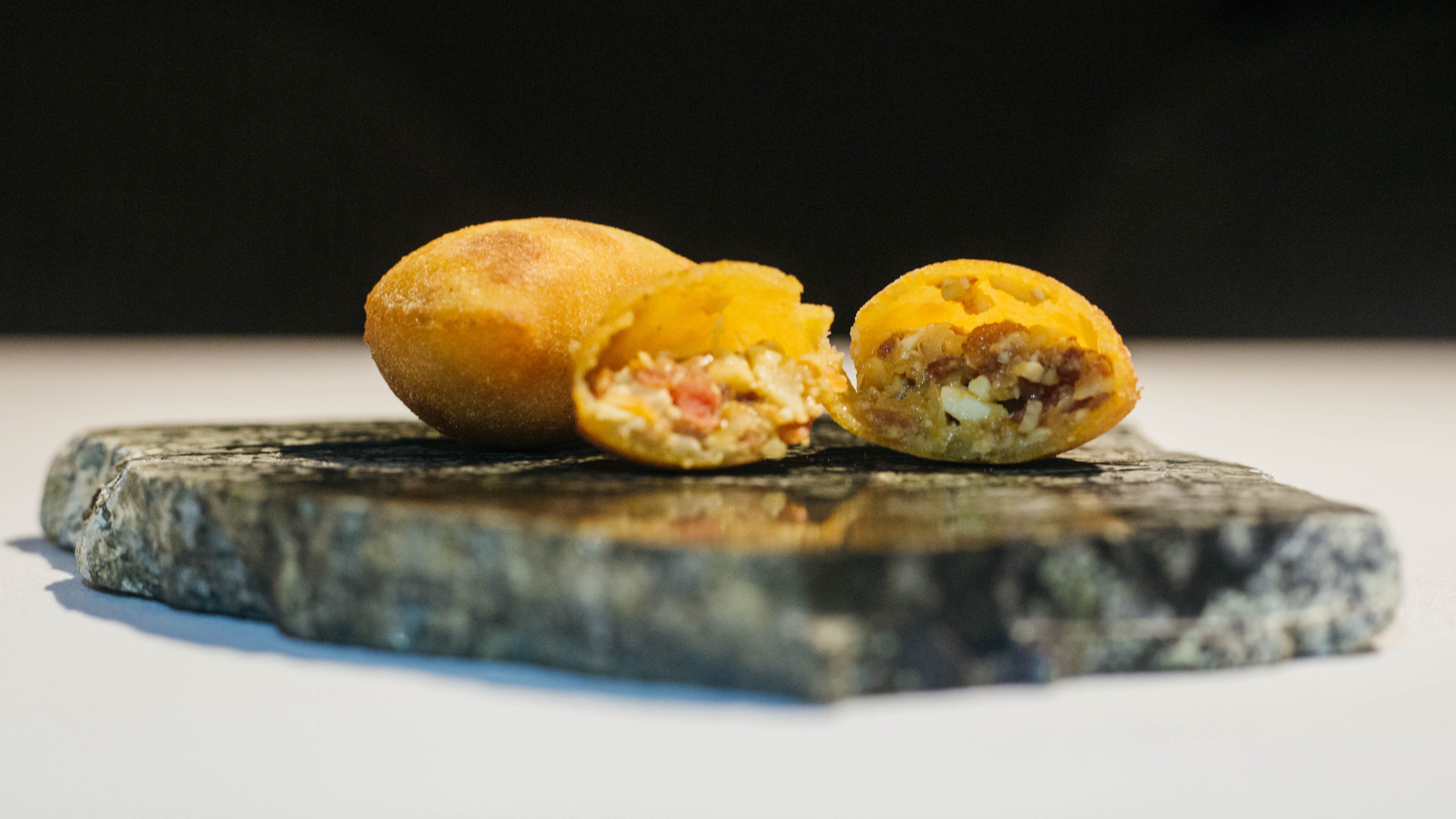
To finish this set, torched banana cue is filled with savory foie gras mousse, a nice contrast to the sweet señorita bananas.
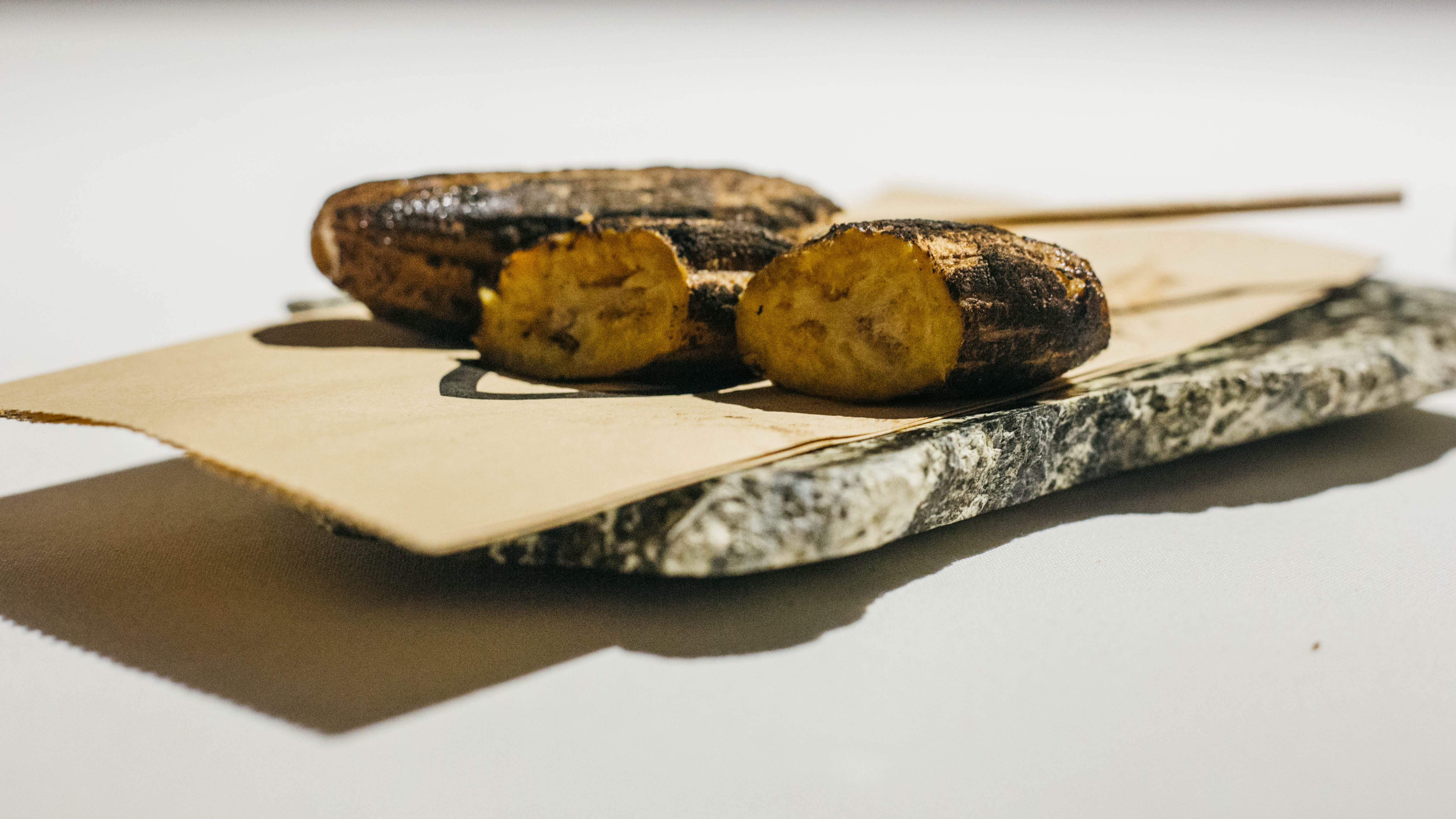
Lutong Bahay

While Binondo drew inspiration from the streets, Lutong Bahay puts the spotlight on local vegetable dishes that may remind you of the warm comforts of home.
There are cherry tomatoes tossed in roasted cashew nut paste – best eaten in one fell swoop.
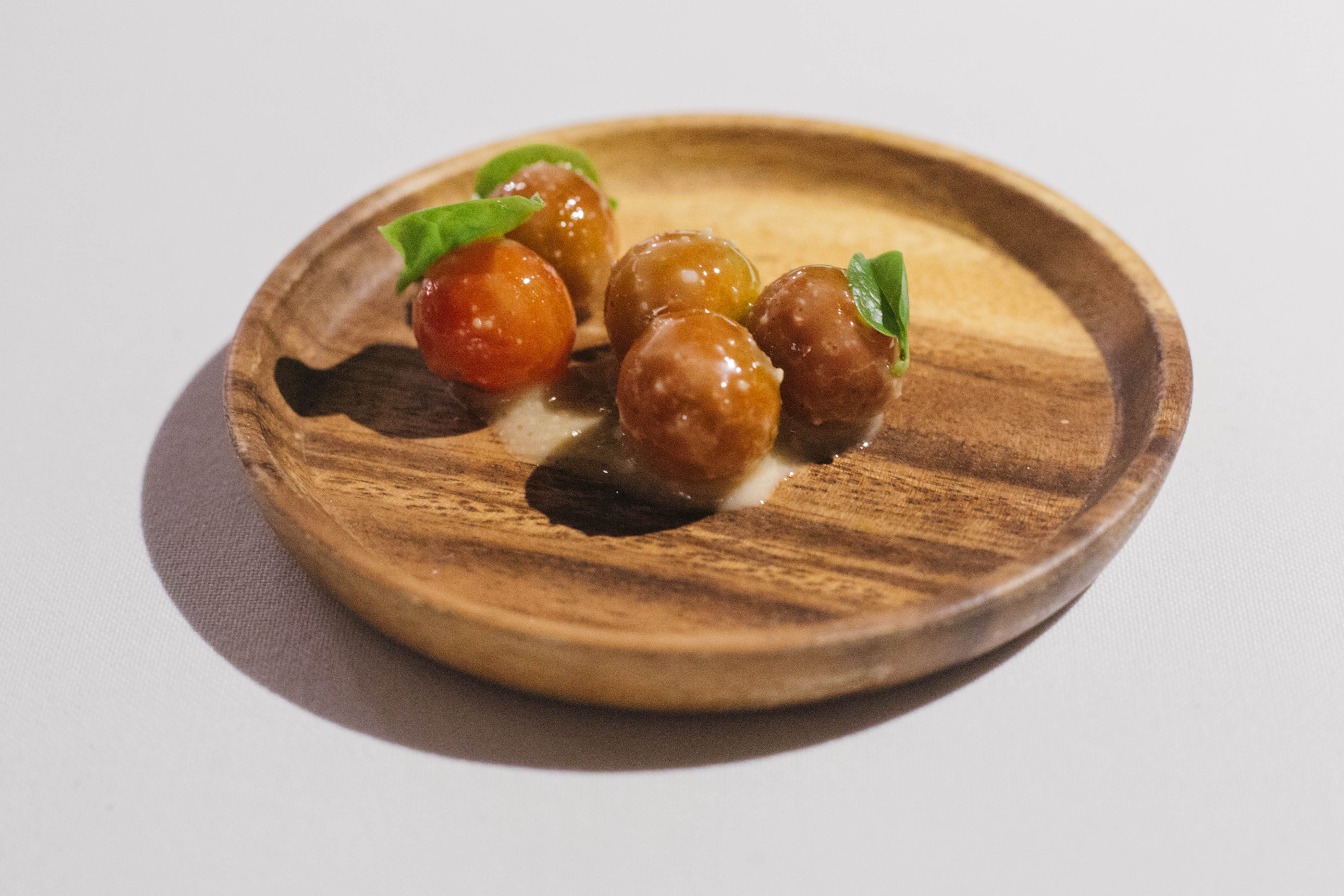
Sayote is marinated in vinegar and sprinkled with snow pea chips.
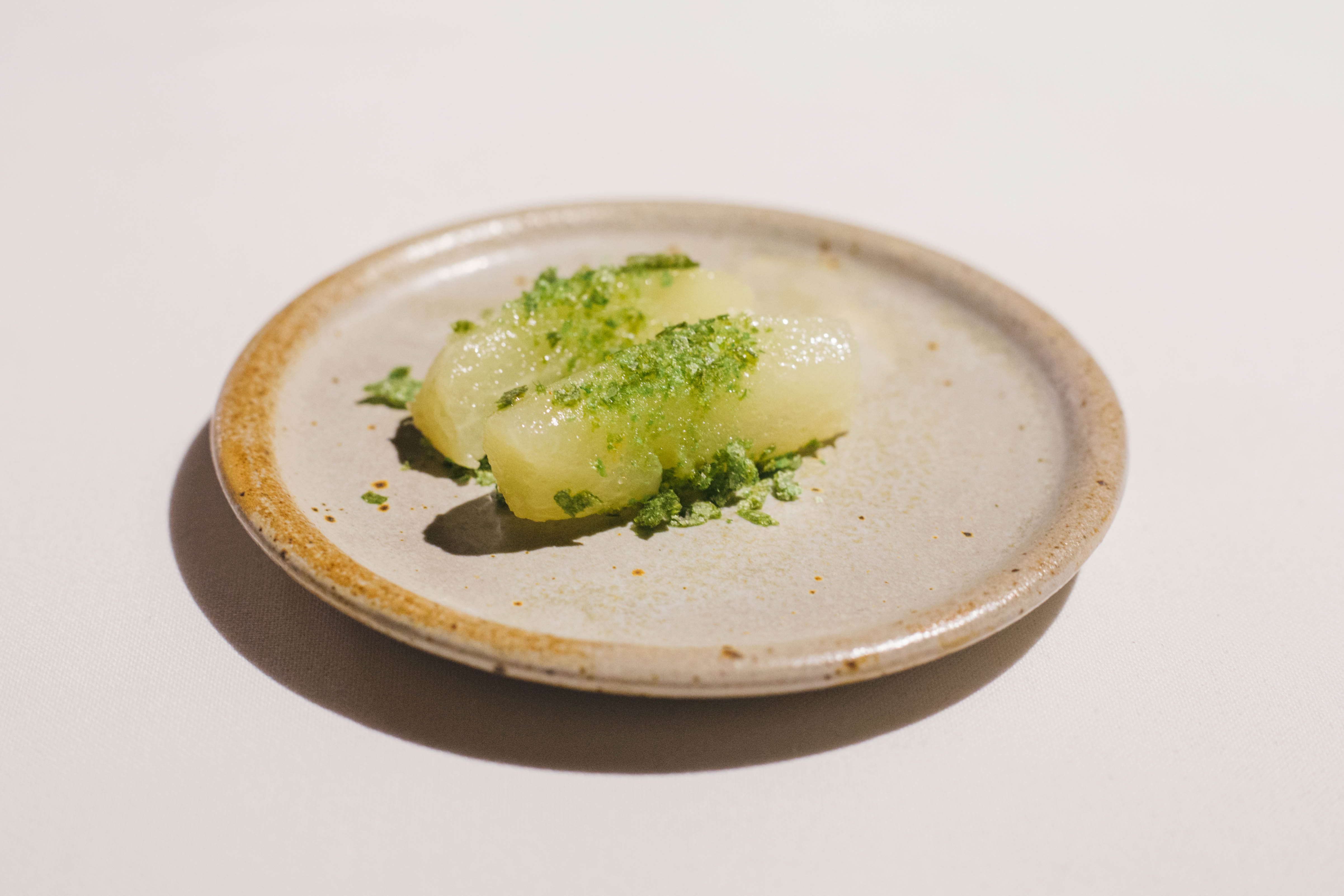
A spin on the beloved arroz caldo, made with heirloom black sticky rice with jamón ibérico to flavor it:
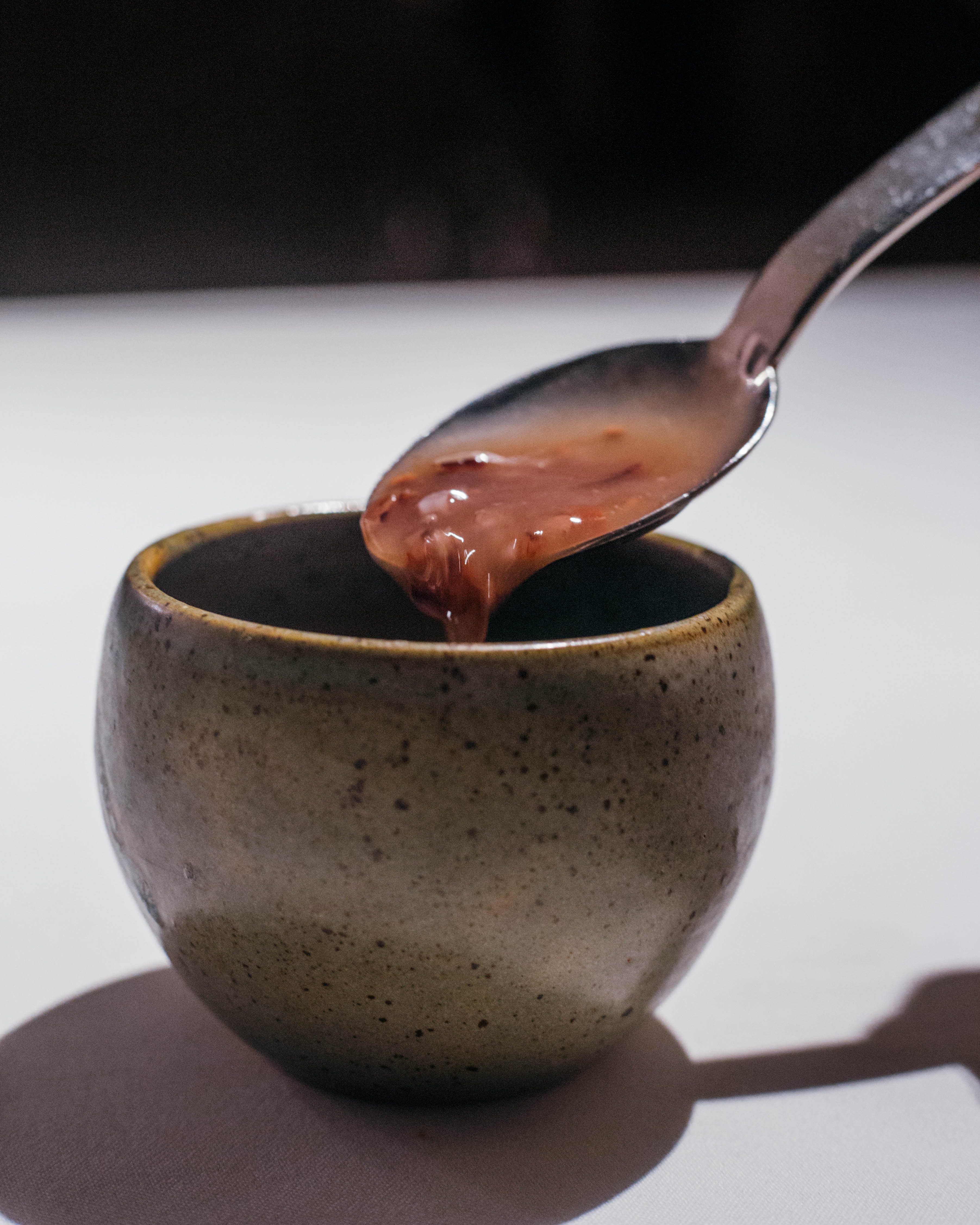
Beer Urchin
Sea urchin – beer clams – foie gras powder – orange
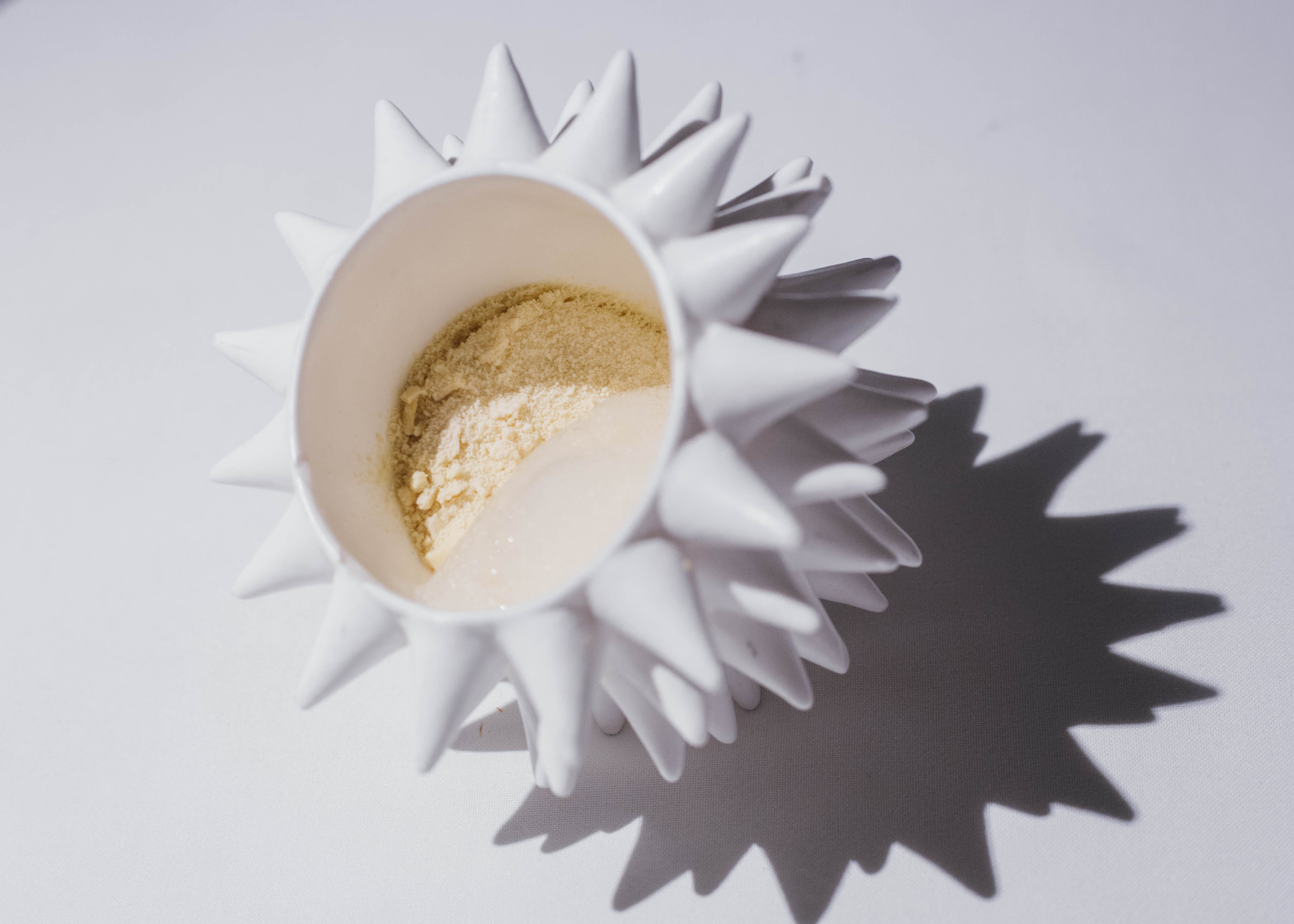
Deep inside a spiky ceramic bowl, uni (sea urchin) swims in Cerveza Negra beer and clam stock accompanied by dried orange bits for that added tart note. However, before you can dig for the golden, custard-like roe, there’s foie gras powder and the same beer and clam stock turned into a foam, which you can scoop and enjoy along with the uni.
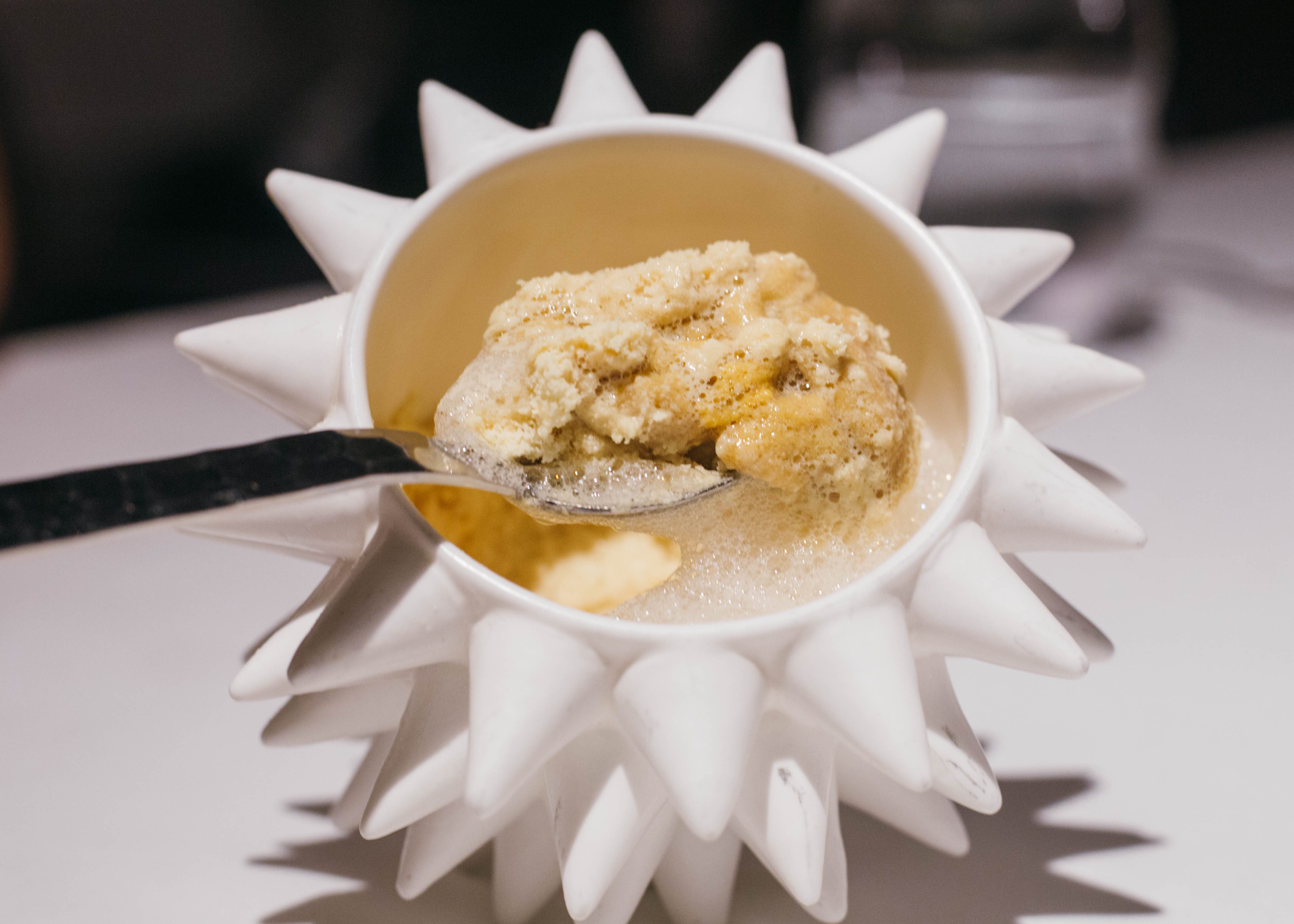
Algae
Tinola royal – local crab – arosep
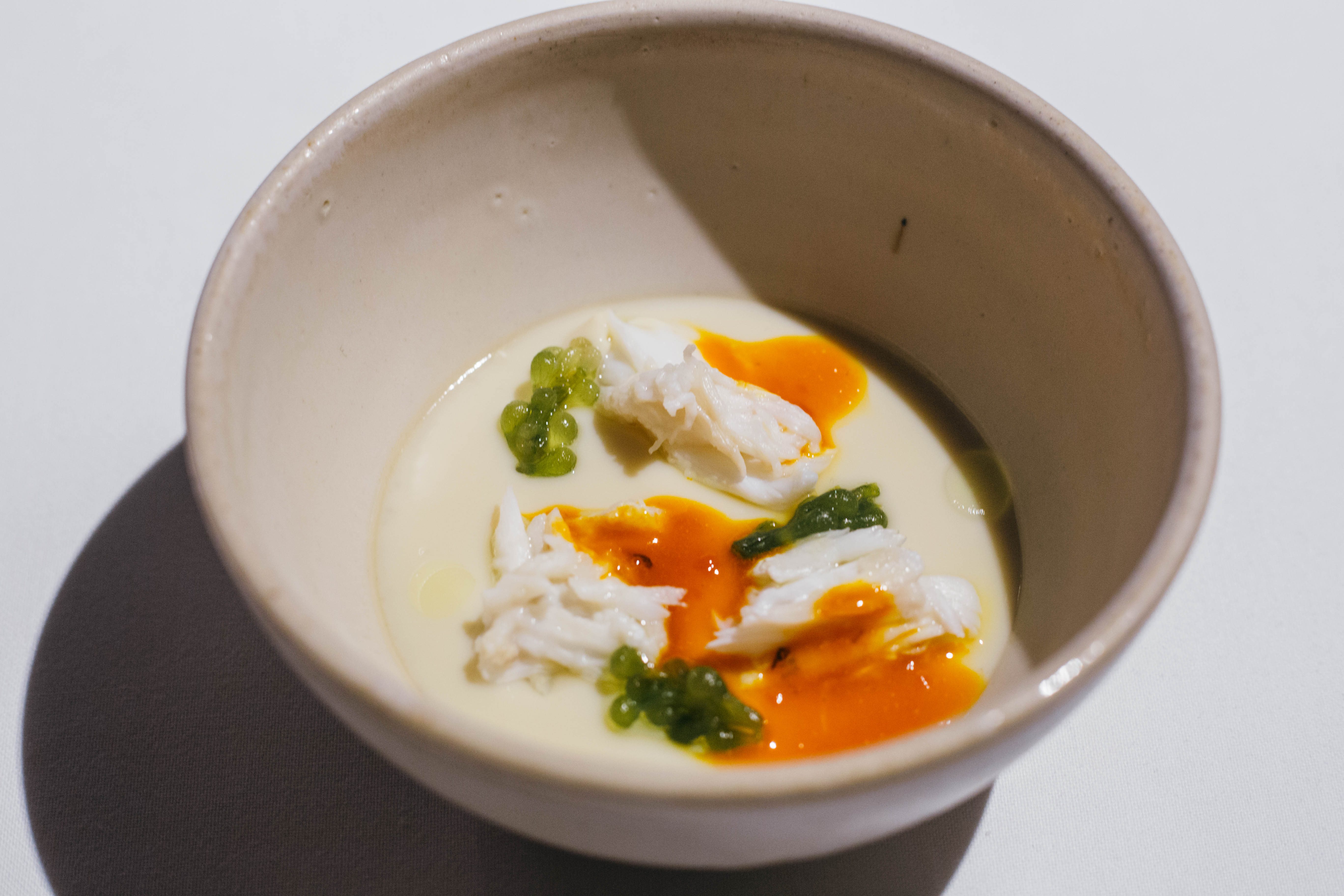
Gallery Vask’s Algae is their take on the tinola, a comforting chicken, ginger, and lemongrass soup turned into a subtle but familiar-tasting custard. Chef Chele tells us that while tinola is one of his favorite Filipino soups, he also took inspiration from the Japanese chawanmushi, a savory egg custard.
It’s topped with some succulent poached crab and aligue (with sherry wine), as well as pickled arosep (a seaweed), which pops in your mouth like sour little pearls.
Tiradito
Yellow fin tuna – kinilaw – pickle arosep
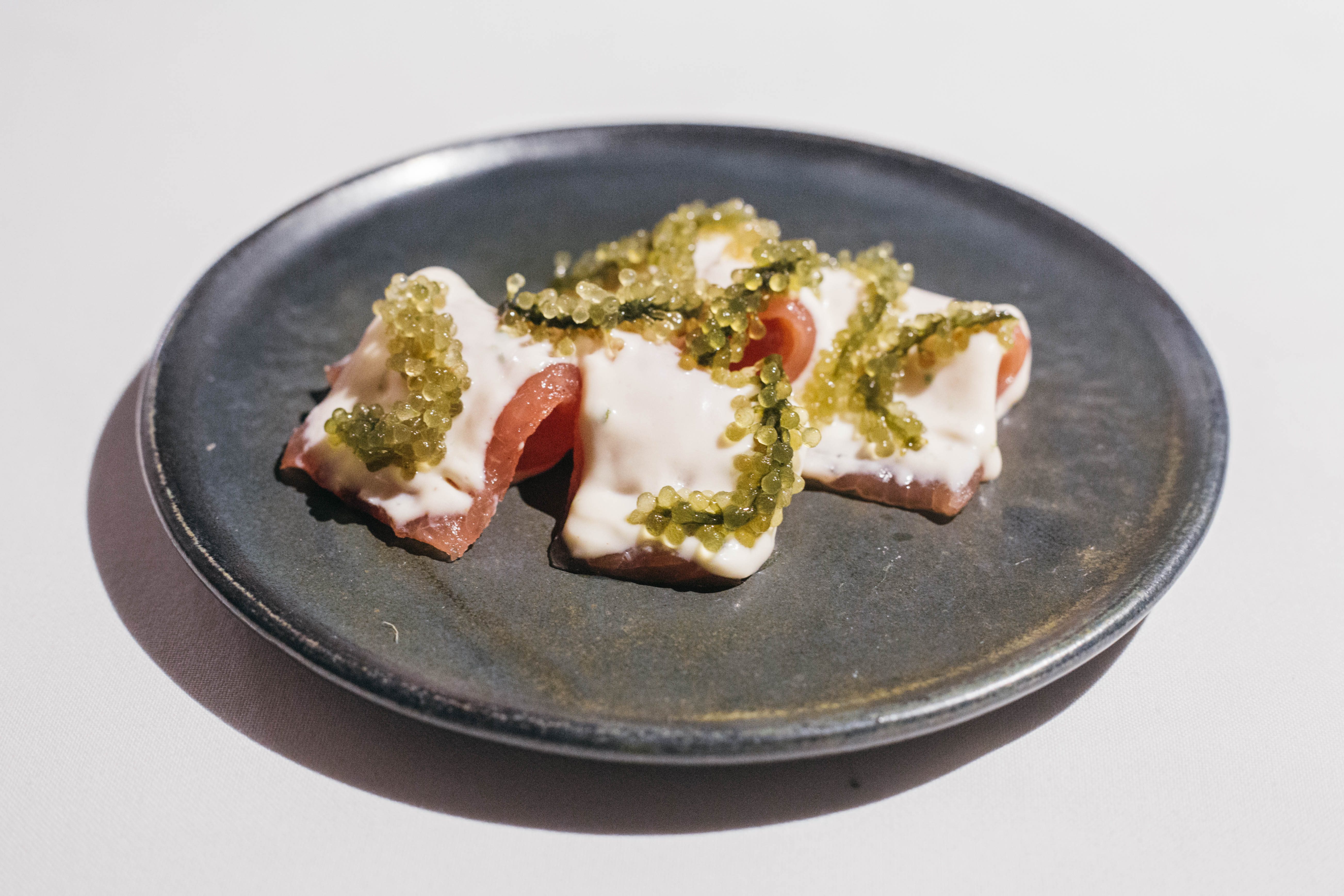
Tiradito is a Peruvian-Japanese kind of ceviche, but this is Gallery Vask’s Filipino version: a kinilaw (for Visayas and Mindanao, or kilawin in Tagalog).
Yellow fin tuna is slathered with a smoked traditional kinilaw sauce made of tabon-tabon, a wild fruit that was picked from Cagayan de Oro, and coconut milk thickened with kuzu, a Japanese starch.
Arosep is pickled in suka pinakurat, a vinegar made in Iligan, to give your bite into the butter-like tuna a spicy and sour edge.
5.6
Oyster – Bicol Express – rabanos – Ilocos vinegar
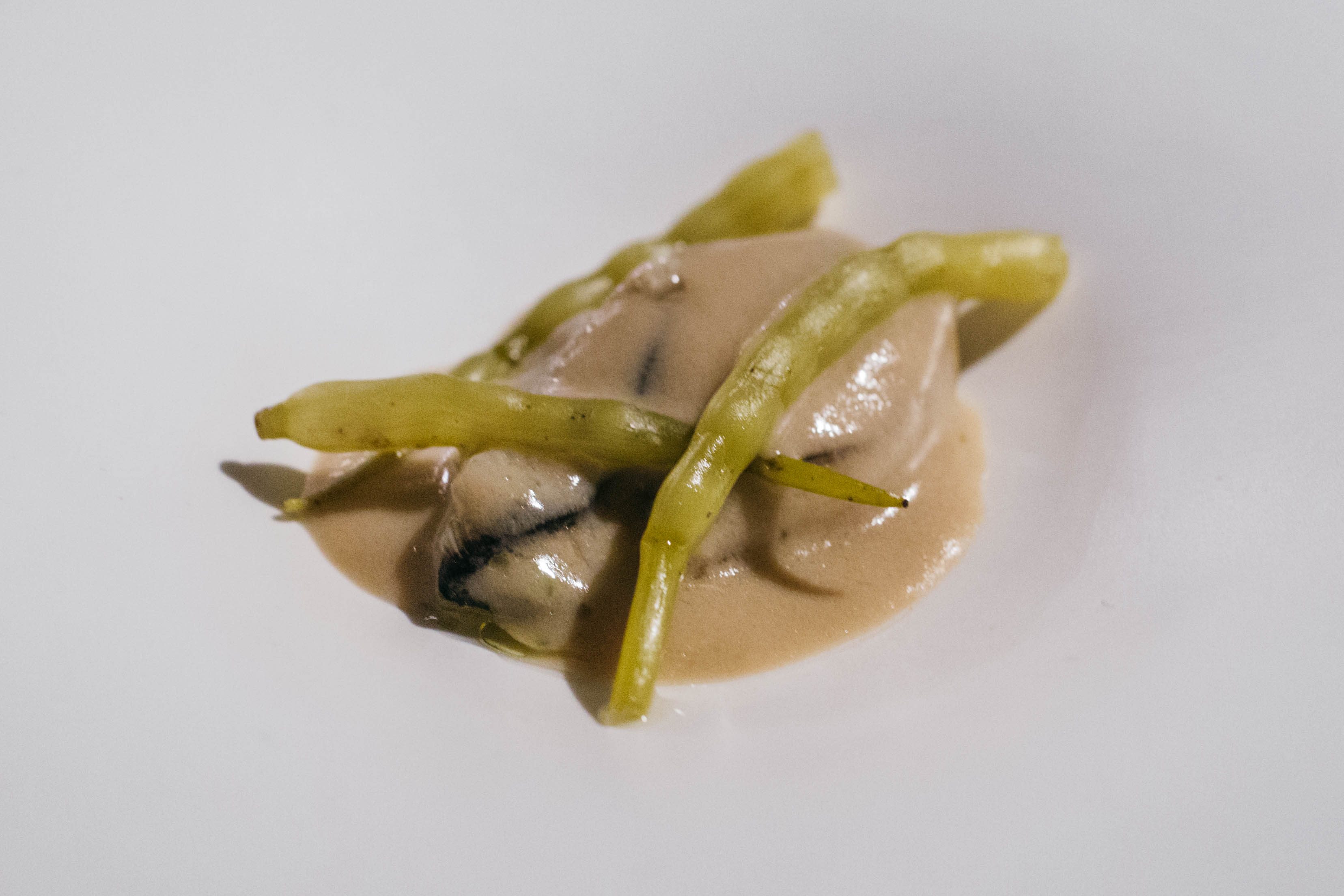
5.6 is named after the origins of 2 of its elements: the Bicol Express from Region 5 or the Bicol Region, and the oysters from Region 6 or Western Visayas.
Swimming in spicy Bicol Express sauce made of coconut milk, the oyster is poached in clarified butter and calamansi juice to give it a hint of citrusy sourness. Pieces of rabanos, or native radishes pickled in Ilocos vinegar, finish the ensemble.
Shades
Maya-Maya – soya – cashew – longan – cardamom – pickled cashew

The dish is called Shades simply because of the different tones of white that the ingredients take. It is also inspired by the Islamic cuisine that Chef Chele tasted on a trip to Malaysia.
Red snapper, also known as Maya-Maya, is drenched in cashew milk and clam stock infused with cardamom and is wrapped in soy milk skin. It is paired with pickled cashew and the lychee-like longan (in place of lansones)
Bauhinia
Mackerel – sour broth

“What makes Filipino flavors different from the rest of the world – something that always comes up is the [sourness],” Chele said.
This Bauhinia, mackerel swimming in a sour broth, is his take on what he believes to be a prevalent flavor in Filipino cuisine and what makes it distinct.
“It might remind you of sinigang, but it’s not sinigang,” he said, explaining that the soup is made with alibangbang (aka Bauhinia) leaves, and adapts a traditional cooking technique from the Aetas who use bamboo to cook.
Sour Ribs
Wagyu – toyomansi – onions – garlic casein – talinum
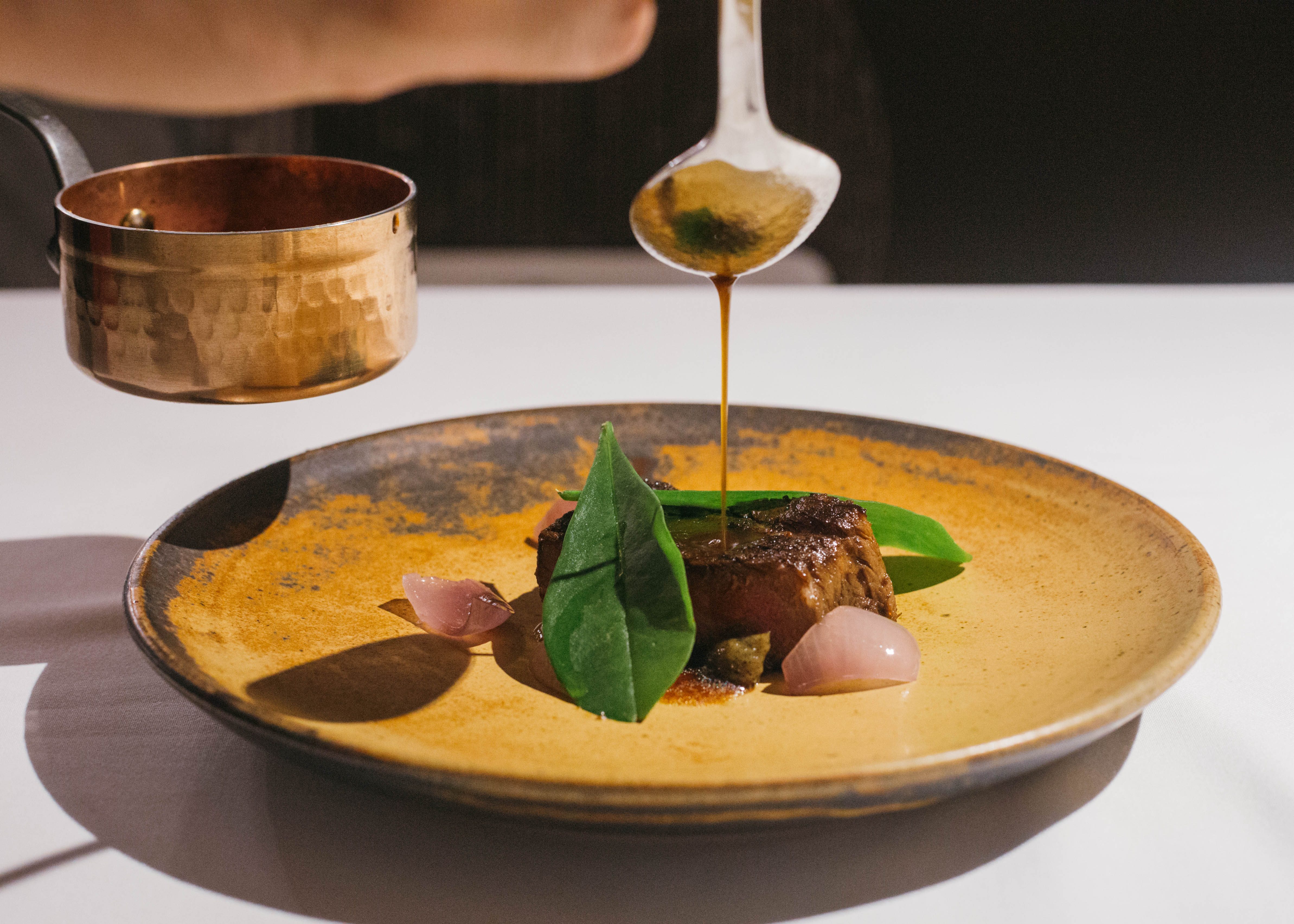
Wagyu beef is cooked sous vide for 28 hours to make it melt-in-your-mouth tender, and is infused with a household salty and sour marinade, toyomansi. To emphasize the rich flavors, demi-glace – also mixed with soy sauce and calamansi – is poured on the beef.
Slather some of the strong-flavored caseína de ajos (garlic casein) on the beef. Take a bite of the talinum leaves, sourced from the Aetas of Pampanga, as a contrast with the rich meat.
Pingol Bato
Dalandan – fermented ginger ale – yogurt – pili nuts
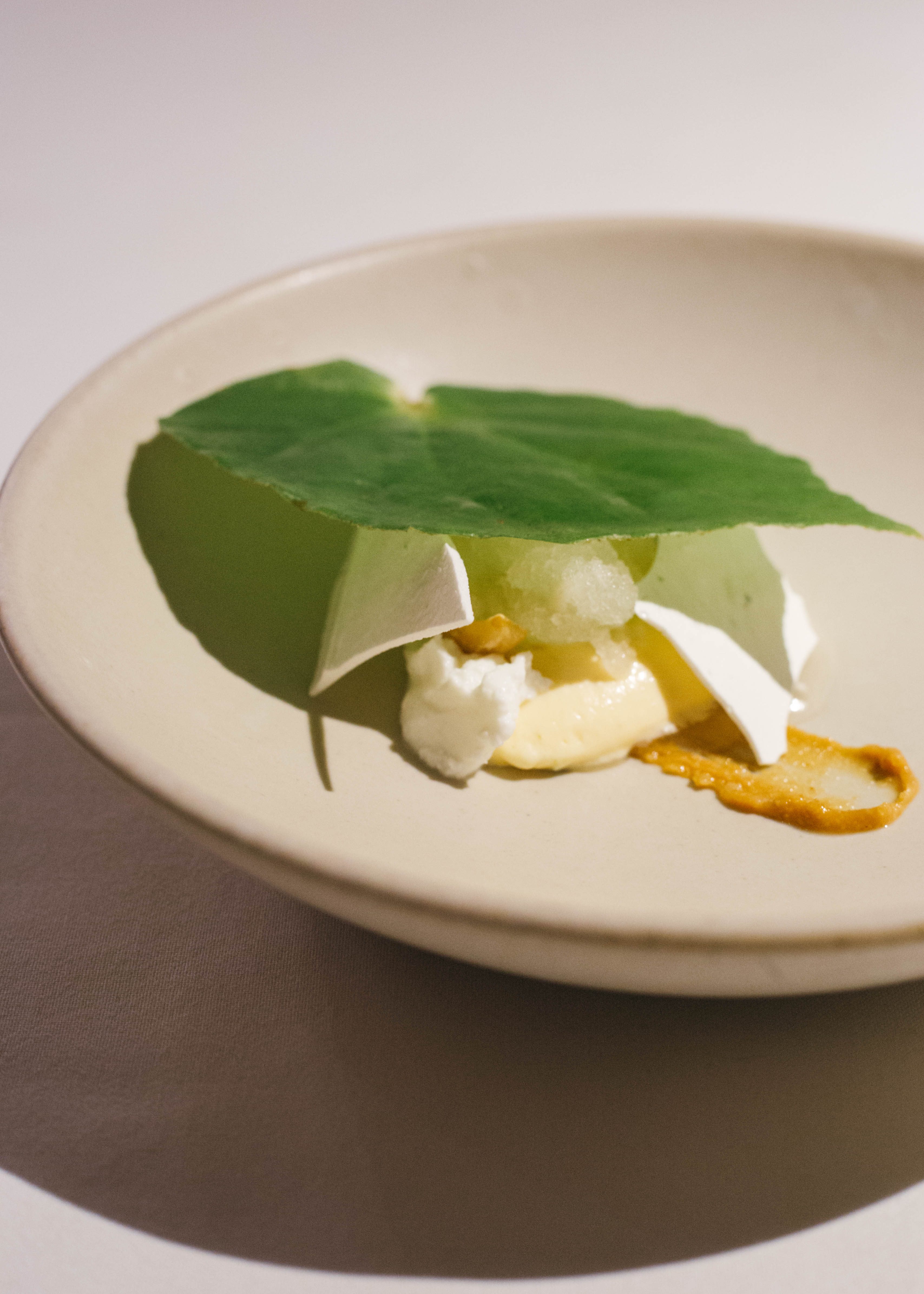
The Pingol Bato cleanses the palate with its refreshing flavors from dalandan mousse, shards of dehydrated dalandan meringue, ginger ale granita, and yogurt. However, the highlight is the begonia leaf, called by the Aetas of Pampanga as pingol bato, whose flavor is reminiscent of sour green apples.
Chef Chele once visited Pampanga and encountered Aetas who were munching on the pingol bato leaf with salt and chili, sparking the inspiration for this dessert.
Pandan éclair
Sweet monggo – pandan mousse – rice crisp – latik ice cream
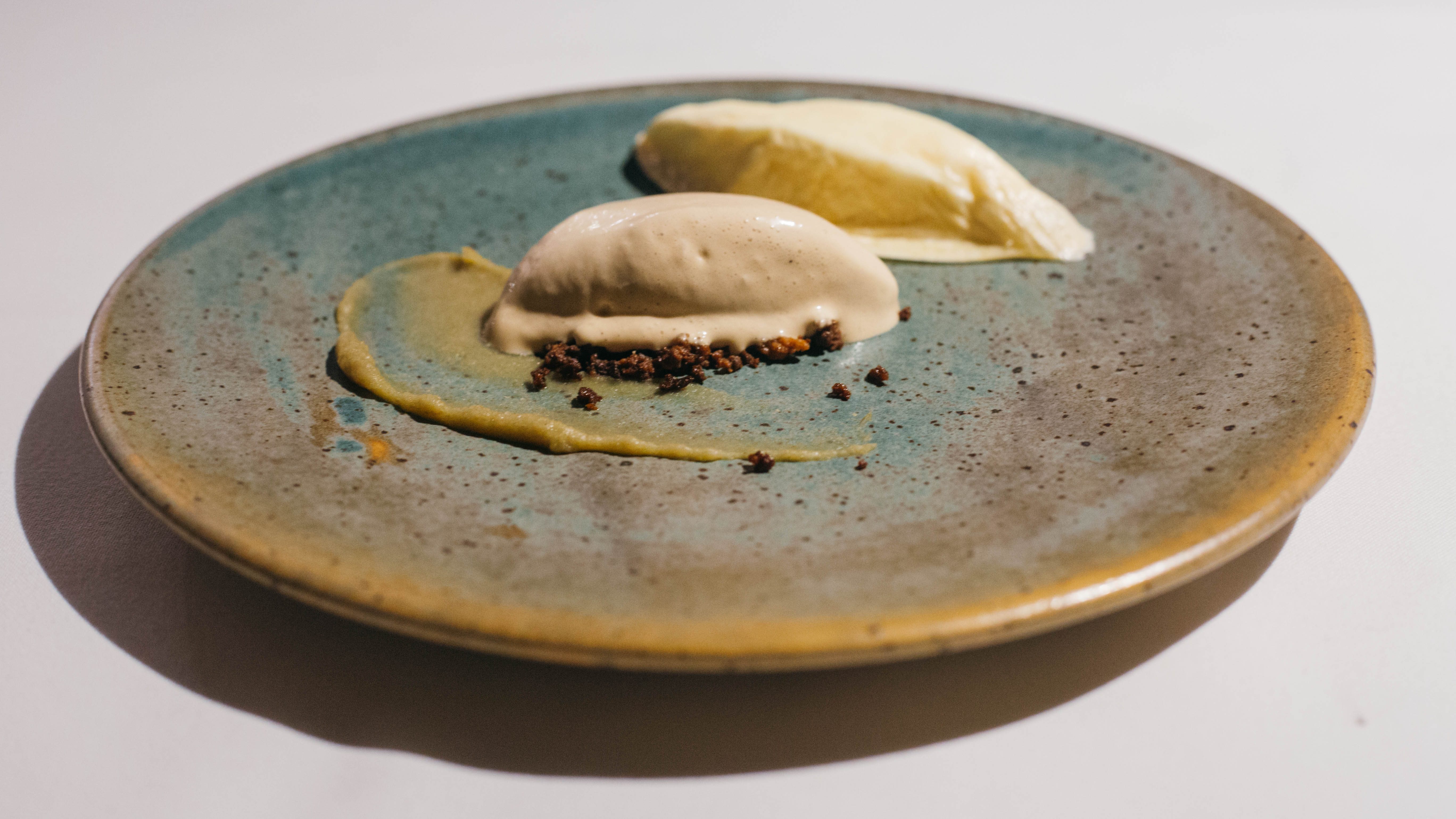
In this take on the French éclair, the puff is made of sticky rice and cheese and is filled with pandan mousse. It is accompanied by latik (fried coconut milk curd) ice cream sitting on a bed of green monggo (mung bean) paste and latik crumbs.
Pintos
Corn tamales – cashew – burnt milk ice cream
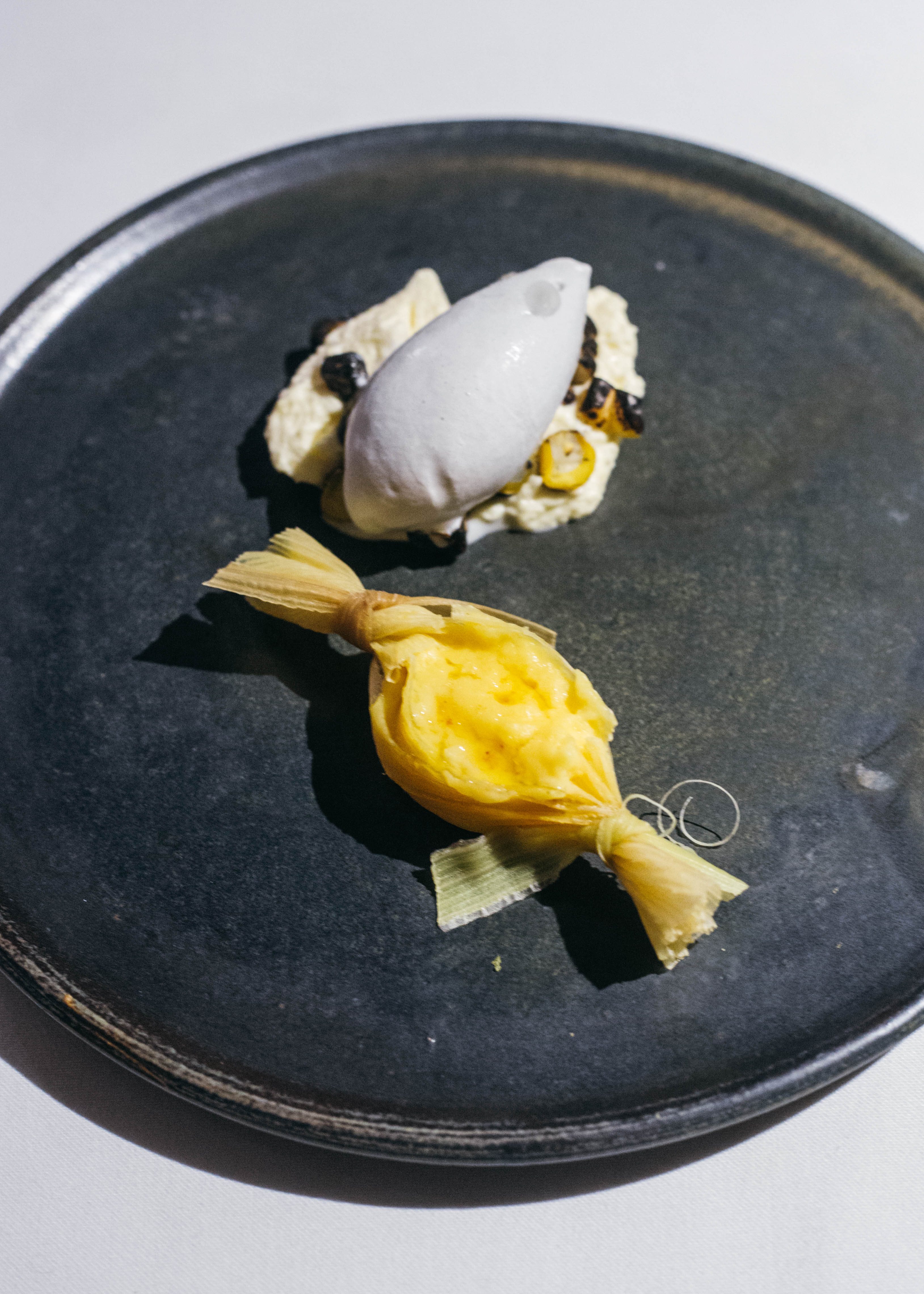
Pintos is Cebuano sweet tamales. Corn pudding is steamed and stuffed in corn husk, and goes well with corn mousse and burnt milk ice cream, which has a distinctly smoky but sweet flavor.
Sungka
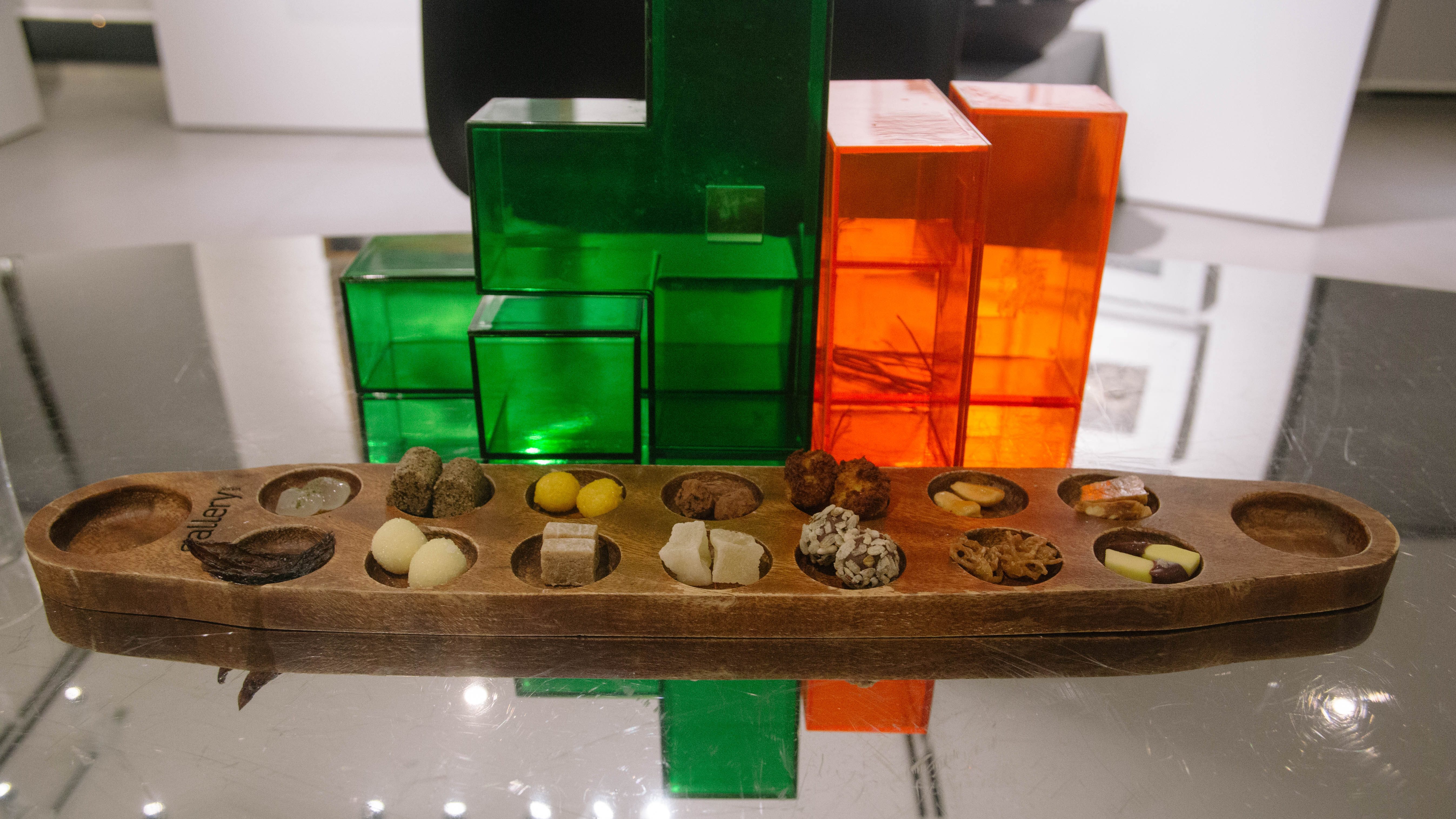
Gallery Vask ends a sumptuous meal with a playful set of petit fours. Several beloved Filipino delicacies are laid out on a sungka board: kaong (sugar palm) with calamansi zest, candied kamias, pastillas, coffee polvoron, squash yema, cashew marzipan, candied kundol (winter melon), Guiana chestnut dipped in cocoa powder, coconut macaroon, tablea fudge ball, coconut bukayo (shavings), candied pili nuts, peanut brittle, green mango dipped in dark chocolate.
‘Anthropologic cuisine’
Modern techniques are used in Gallery Vask’s craft. Chef Chele, who hails from Spain, earned his stripes in his homeland’s top restaurants, such as Andra Mari, Arzak, elBulli, El Celler de Can Roca, Nerua Guggenheim, and Mugaritz. He honed his culinary philosophy and techniques in these kitchens.
As shown in the dishes we sampled above, he indeed takes an innovative approach to a variety of ingredients and flavors found across the Philippines. However, he explains that the philosophy of Gallery Vask goes deeper.
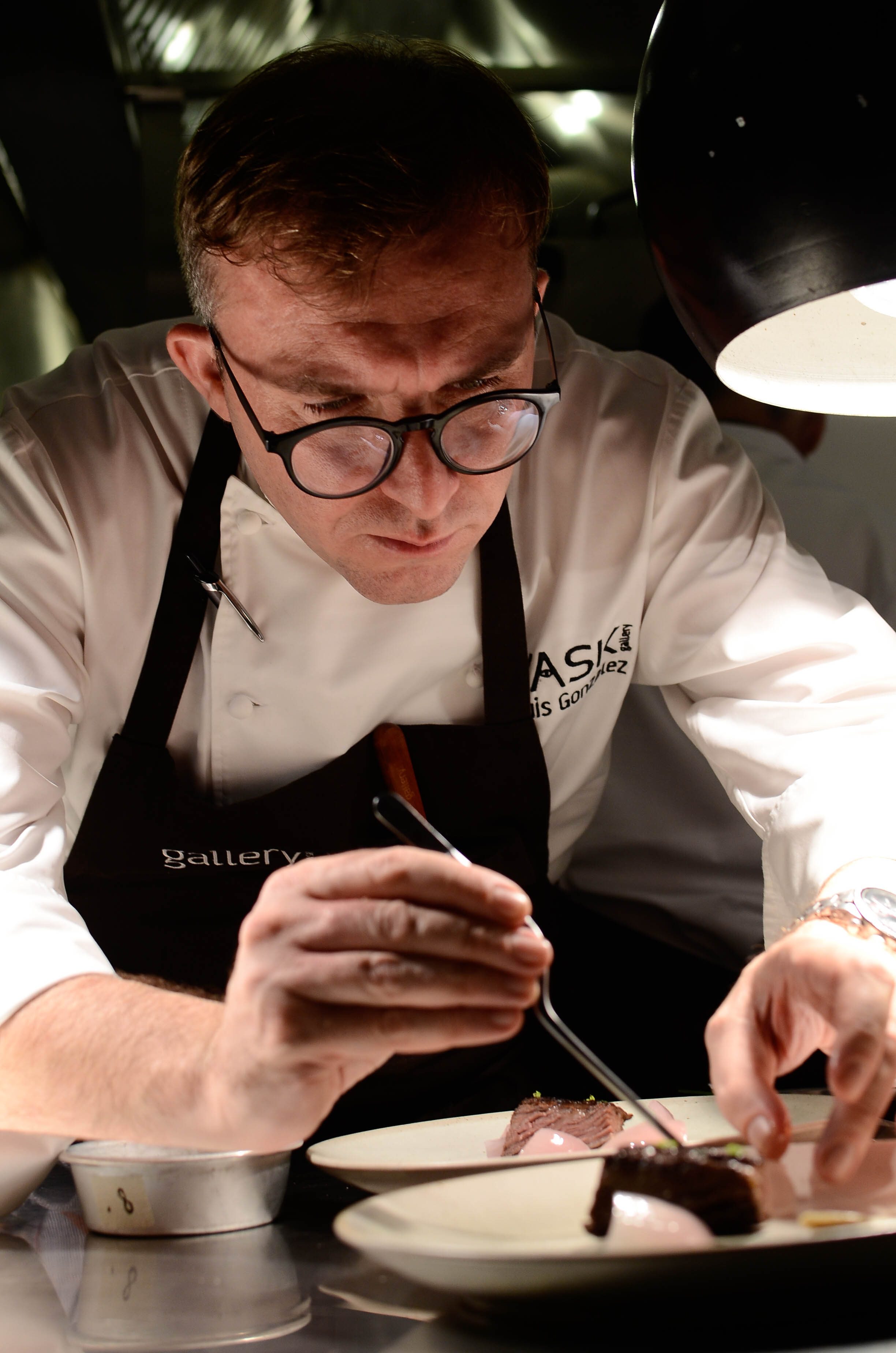
“The combination of the flavors is important, but [what’s] more important [is] the history behind,” Chele told us, as he explained some dishes.
Gallery Vask takes pride in what it calls an “anthropologic cuisine, where cultures, traditions, and various other inspirations are translated into flavors,” it says in a press release. In the kitchen, various learnings and discoveries from Chele’s travels and friends meld together.
“Our journey has led us to work with local farmers and fishermen. We use fresh, indigenous products while honoring their true nature,” Chele explains further in a press release, which also highlights a commitment to sustainably sourced goods.
Gallery Vask’s commitment to champion native food is even translated in the space it occupies, designed by architect and artist Juan Carlo Calma, and adorned with contemporary Filipino art – thus, the “gallery” in the name.
The dishes are also the product of research and development with his talented team, whose members even step out of the kitchen to personally explain the details to guests.
RG Macalinao, one of the young cooks under Chele, said about their chef, “He’s very creative, but he lets us have our own ideas. So he asks us, ‘What do you think about this? What can we put in this?’ Sometimes, there are days when he does R&D [research and development]. It’s very collaborative.”
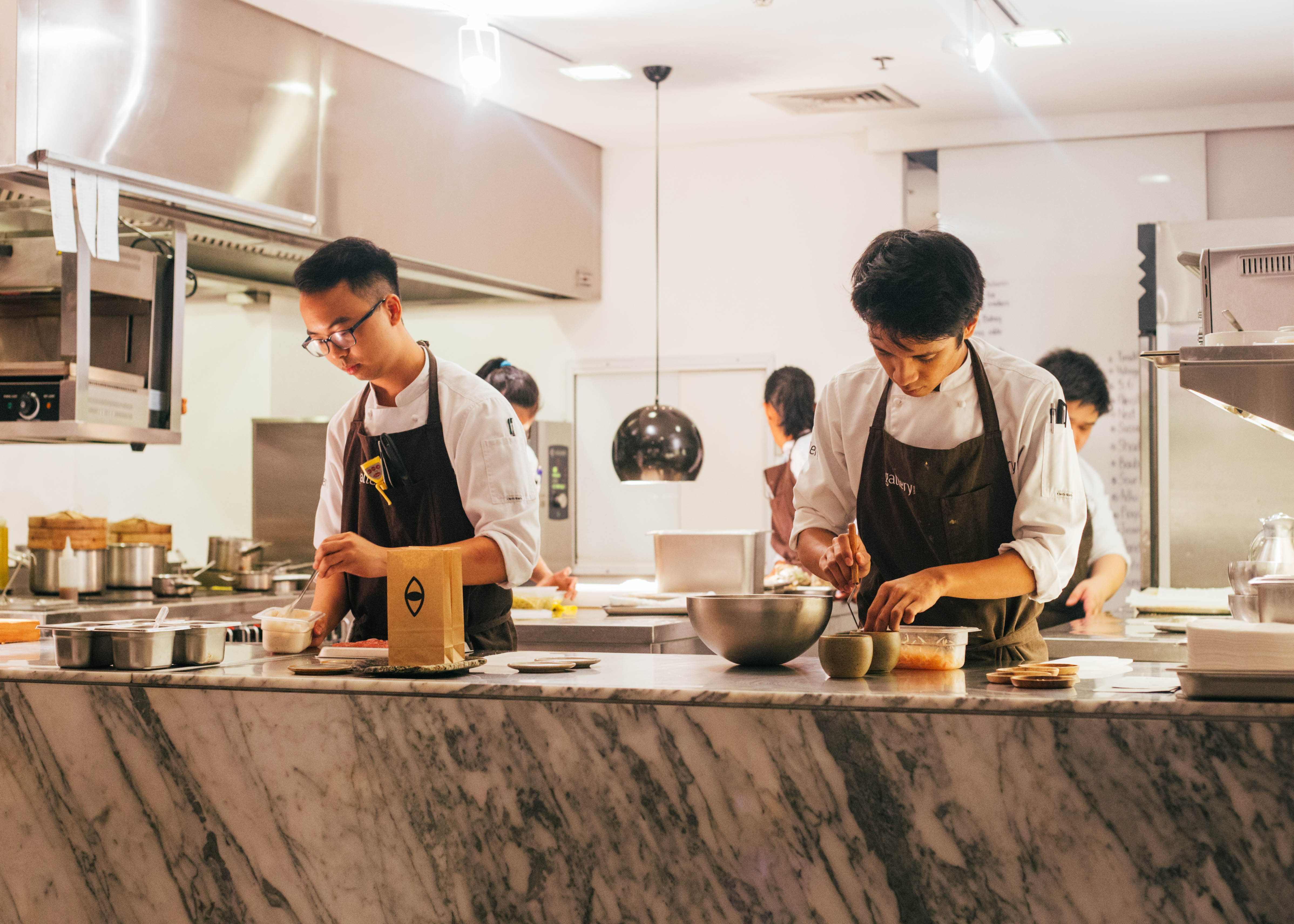
Indeed, there is plenty to say about how Gallery Vask deserves its award, and it’s really about having a clear identity, vision, and commitment, and going beyond what you would expect at a fine dining establishment.
Will you be booking your table at Gallery Vask soon? Have you eaten here? Let us know in the comments. – Rappler.com
Gallery Vask is located at 5/F Clipp Center, 11th Ave corner 39th St, Bonifacio Global City, Taguig City Contact 0917 546 1673 for inquiries and reservations. Facebook | Instagram
Add a comment
How does this make you feel?
There are no comments yet. Add your comment to start the conversation.